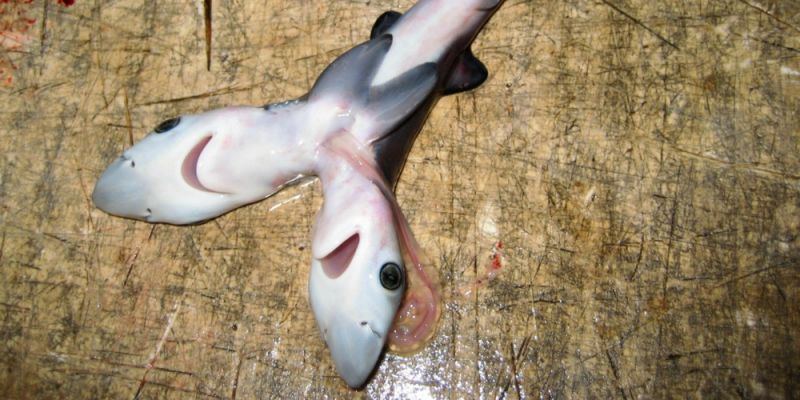Two-Headed Sharks Showing Up in Many Parts of the World
Sat 05 Nov 2016, 09:45:03

A slew of rare two-headed sharks have been found from California to the Caribbean and from Mexico to the Mediterranean, leading scientists to ponder why. Reminiscent of the classic "Simpsons" three-eyed fish, Blinky, the mutated sharks are raising eyebrows. Fox A two-headed embryo of an Atlantic sawtail cat shark was found recently in the Mediterranean Sea. It was the first oviparous, or egg-laying, shark ever documented with two heads. Each head contained a mouth, two eyes and a brain, and was joined behind the gills, according to a paper published Oct. 9 in the Journal of Fish Biology. The species is considered near threatened. Two-headed blue shark fetus discovered in the Indian Ocean off
In 2008, Christopher Johnston, a fisherman in the Indian Ocean, pulled up a pregnant blue shark. When he cut it open, a two-headed fetus popped out. Johnston tried to save it by putting it in a tank and feeding it, but it died.
Similarly, a fisherman working in the Gulf of Mexico off the Florida Keys found a fetus with two heads in a bull shark he caught. Upon examination by a scientist at Michigan State University, it was determined to be the "first recorded incidence of dicephalia in a bull shark."
Researchers from Mexico found conjoined twins in blue sharks in the Pacific Ocean and Gulf of California. Blue shark females carry many live embryos at one time, leading to these abnormalities, said the scientists.
Because these
finds are so rare, it's tough to pin down a cause. Genetic or metabolic disorders, viruses, pollution or overfishing are the amount the possible culprits.
finds are so rare, it's tough to pin down a cause. Genetic or metabolic disorders, viruses, pollution or overfishing are the amount the possible culprits.
Each year, 100 million sharks are slaughtered, often for their fins. Shark fin soup is a popular delicacy in Chinese and other Asian cultures. The number represents between 6.4 percent and 7.9 percent of the global shark population.
Bycatch is another factor affecting sharks in some areas. Blue sharks are among those most vulnerable. Listed as near threatened, some 20 million blue sharks are lost each year to accidental catch by longline and driftnet fisheries.
Overfishing not only puts sharks at risk of extinction, but also shrinks the gene pool, potentially causing these observed mutations.
Nicolas Ehemann, a marine scientist who found two cases of two-headed shark embryos in the Caribbean, told National Geographic that "if the two-headed fetuses are more prevalent in nature, then overfishing is a strong culprit as it may cause the gene pool to shrink."
A rare, 22-inch long one-eyed shark was found in the Gulf of California near Mexico in 2011.
And that fictional three-eyed fish from Springfield? A real three-eyed catfish was found last year swimming in the Gowanus Canal in Brooklyn. This 100-foot wide, 1.8-mile long canal was an industrial sewer from the mid-1800s and is now a U.S. Environmental Protection Agency Superfund site.
No Comments For This Post, Be first to write a Comment.
Most viewed from Specials
Most viewed from World
AIMIM News
Latest Urdu News
Most Viewed
May 26, 2020
Do you think Canada-India relations will improve under New PM Mark Carney?
Latest Videos View All
Like Us
Home
About Us
Advertise With Us
All Polls
Epaper Archives
Privacy Policy
Contact Us
Download Etemaad App
© 2025 Etemaad Daily News, All Rights Reserved.






















.jpg)
.jpg)
.jpg)

















